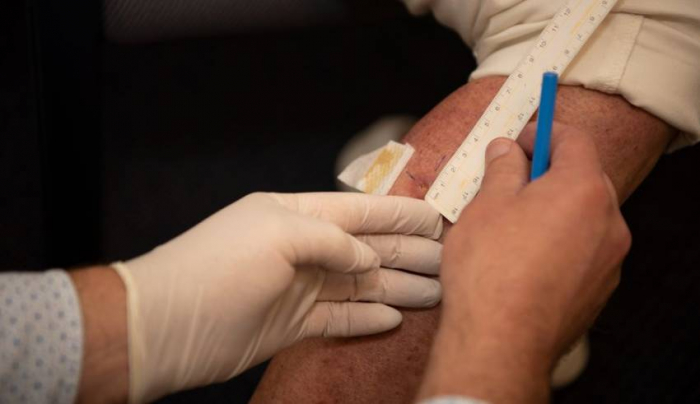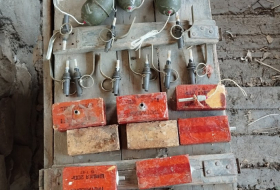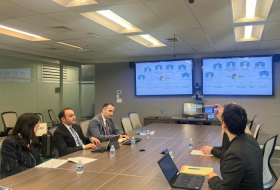Scientists are scrambling to understand rising cases of Buruli ulcer in Australia – and of the role humans and possums play in spreading it.
Adam Noel thought it was just a mosquito bite. He'd noticed the slightly raised, red mark on the back of his ankle about a week before, but it wasn't getting better. The doctors thought it was some kind of skin irritation. Two more weeks went by, but his heel now had a hole in it. "There is something very strange going on," he thought, so he drove himself to Austin Hospital in Melbourne to have it looked at again.
It was April 2020 and the coronavirus pandemic had a firm grip on Australia. Staff were overwhelmed. The doctors told him the wound would heal up soon enough. Instead, after a few more days, you could see his Achilles tendon through the now table tennis ball-sized hole in his flesh. So back to hospital he went, this time to St Vincent's, one of Australia's leading hospitals. They kept him in for about a week taking biopsies before finally confirming the cause of Noel's ordeal. It was Buruli ulcer: a bacterial disease that can cause large open wounds and, if untreated, lead to permanent disfigurement.
It was about six weeks from Noel noticing the mark to getting a definitive biopsy and taking the right medication. The doctors say he could have lost his foot.
Prior to noticing the initial mark, Noel had been doing a lot of work in the garden, digging up the soil to make way for a big shed. "I cut down a bunch of trees that have not been disturbed in 20 years," he says. "I'm pretty convinced that [getting the ulcer] coincided with disrupting the trees and possum habitat."
Yes – possums. Scientists believe these fluffy, nocturnal creatures may play a key role in the transmission of the Buruli ulcer to humans. They too suffer from the disease, and the Buruli bacteria – called Mycobacterium ulcerans – is found in high quantities in their faeces. Much natural possum habitat has been lost to development in recent years, bringing possums and humans closer together as the two species vie for space, and quite possibly driving up cases of the disease.
Once a suburban resident, the Buruli ulcer is now inching closer to Melbourne, and doctors and scientists are trying to stop it before it reaches the population of five million people.
A rising threat
Noel lives in Melbourne but his family have a beach house about 100 km (62 miles) away in the Mornington Peninsula. It's an affluent area which juts out like a leg from the mainland, with the tip of the toe kicking west. A popular holiday destination for city-dwellers, sandy beaches are flanked by colourful beach huts and wooden boardwalks wind through the rolling hills with views of the ocean. Trails lead to places like "Diamond Bay" and along "Millionaire's Walk". The houses are big and modern, many with spacious gardens and swimming pools.
It's not exactly the kind of place you'd expect to hear of a rampant flesh-eating bacteria on the loose, but cases of Buruli ulcer in Victoria tend to be found in this area. Across the state, cases have more than tripled in recent years: in 2014 doctors reported 65 cases; in 2019 there were 299 while last year saw 218 cases.
When a case of the ulcer is suspected, the patient is most often referred to Daniel O'Brien, an infectious disease physician and Buruli ulcer expert who runs a clinic in nearby Geelong. He's started making the 40-minute ferry ride across the water weekly to see the growing number of patients with the ulcer. He says he sees as many as five to 10 new patients weekly.
The physical impacts are significant – the aggressive ulcer can cause disfigurement, requiring serious surgery and leading to long-term disability
The Buruli ulcer can rapidly destroy skin and soft tissue if not treated with a combination of specific antibiotics and steroids for weeks and, in many cases, months. "No matter how small the lesion, or how big it is, there's nobody that's not significantly affected by this disease," says O'Brien. The physical impacts are significant: the aggressive ulcer can cause disfigurement, requiring serious surgery and leading to long-term disability. "It can really eat away at a whole limb," says O'Brien, whose patient list includes young children who have needed up to 20 operations to deal with their ulcer.
There's also an economic impact to this disease. Noel works on the TV soap opera Neighbours and had to take a month off work because the hole in his foot meant he was unable to stand up for any extended period of time. The treatments can leave people feeling very unwell too. Noel's steroids made him "wound up like a clock". "I was bloody happy once we stopped," he says. Seven months on, he still has to take antibiotics. Other patients spoke of the antibiotics causing sickness, oral and vaginal thrush and an upset stomach.
"It's hard going. It's very uncomfortable, and very unpleasant," says Cheryle Michael, a retiree who got a Buruli ulcer on her face in August 2020 and is still taking medication. "The steroids made me so depressed, so tired and unmotivated," she says. The antibiotics cause stomach issues which make her nervous to leave the house. "I really don't want to be too far away from my own toilet, quite frankly," she says.
The Buruli ulcer is treated with a strong dose of two powerful antibiotics that need to be taken for several weeks and often months: rifampicin, which is also used in the treatment of other serious bacterial infections including tuberculosis and leprosy, and moxifloxacin, which can be used to treat plague. Depending on the severity of the ulcer, high doses of steroids are also needed, as is surgery. "I wouldn't say any treatment is ever easy. [The patients] all suffer to a significant degree," says O'Brien.
Ulcer unknowns
While the Buruli ulcer eats away at the soft tissue of those unfortunate enough to suffer from it, questions plague the doctors and scientists tasked with trying to stop it from infecting anyone else.
"We don't know enough about it. There's some really important scientific questions around where it leaves the environment, the other animal reservoirs and how humans actually acquire it," says O'Brien. "Unless we get answers to these vital questions, we're really going to struggle to control the disease."
Currently, scientists are working on the hypothesis that the bacteria is amplified by possums and their faeces. Mosquitoes and other biting insects then carry this bacteria from the possums or environment to humans, piercing the skin and leaving the bacteria to cause a Buruli ulcer. But this remains a theory, and no one knows for sure if humans are contracting the disease from mosquitoes, the soil or from possums themselves.
When the Buruli ulcer first emerged in the state of Victoria in 1948, there were just a handful of cases but Australia is now seeing the Buruli ulcer become more common
The Buruli ulcer is classified as a "neglected" disease by the World Health Organization: it doesn't receive much attention and not much is known about it. It was first discovered in 1897 in Uganda, but because it mainly affects mainly poor communities with limited healthcare, "there just hasn't been the money to really put the time, effort and resources into the research," says O'Brien. His own expertise stems from spending years working in West Africa treating patients with the Buruli ulcer, and with related diseases: leprosy and tuberculosis.
When the Buruli ulcer first emerged in the state of Victoria in 1948, there were just a handful of cases. But, experts say, Australia is now seeing the Buruli ulcer become more common.
No one knows how it got here. Even some people living in the middle of the peninsula say they've never heard of it, says Kim Blasdell, a senior research scientist at CSIRO, Australia's national science agency. She is leading the work to understand the potential link between possums, the Buruli ulcer and humans.
"If there's people living in the disease hotspot areas who haven't heard of this, then most people outside of these areas won't have heard of it either," she says. That can be a big problem: uninformed patients waiting weeks for diagnosis can potentially be disastrous, as Noel found with his foot. "So you really want to be able to prevent it," says O'Brien.
Disease development
A key part of prevention lies in understanding what might be happening in the region to drive up cases of the disease. Looking for changes in the local environment is vital, according to Blasdell. "There's a lot of development going on down in the areas where there's been lots of human cases," she says.
Humans have been changing the Mornington Peninsula since Europeans arrived in 1803 and began clearing much of the native forest to provide firewood for the newly established city of Melbourne. But as the human population has swelled in recent years, development has increased and more and more natural habitat has been lost.
"When people clear the land to put a new house on it or clear the native vegetation, that means that the native animals that live on that land, including the possums, get moved on to the remaining vegetation in that area. It concentrates the number of possums," says Blasdell. That can concentrate the amount of something like Mycobacterium ulcerans in a small area, as well.
Human development also means that people are coming into closer contact with the animals. Possums naturally live in native trees like tea trees, but these fluffy creatures can adapt well to a more urban environment when forced – such as people's gardens.
We're putting incredible pressure on natural systems; we have vastly more humans and livestock than wildlife - Rosemary McFarlane
In their new homes, the possums also are given access to more resources than they might have had in their natural environments. These creatures have a penchant for many leafy plants, from the leaves of oak trees in public parks to roses, magnolias and fruit trees which are found in abundance in gardens in this region. A prized flowering plant can be reduced to a bare stem by a hungry possum, much to the despair of the suburban gardener.
"A lot of houses in the areas have a lot of native [plant and tree] species. The possums love them; they live in them and poo all over the ground. They run over roofs and in garages," says Blasdell.
This may sound like a nuisance, even without the Buruli ulcer, but possums are protected species in Australia – it's illegal to kill or harm them. Often, people will try to discourage possums instead by shaking trees to get them out, or even using "fish sauce and capsicum spray", Blasdell says. In doing so, they may be putting themselves in even closer contact with the possums, raising their risk when it comes to disease.
Aside from clearing native habitat and inadvertently bringing wild animals and humans closer together, new developments may be unwittingly inviting disease in, Blasdell says. New developments on the Bellarine Peninsula, on the opposite side of the bay to the Mornington Peninsula, are filled with lakes and waterways. It might look nice. But not to her and her colleagues. Instead, she says, they immediately think of mosquitoes which could be involved in Buruli transmission, as well as being known carriers of other pathogens.
One local who has noticed a change is Cheryle Michael, who arrived in the area with her family in the early 1990s. "We used to say how nice it was because there weren't mosquitoes, but certainly mosquito populations have increased over the decades," she says. As have cases of the Buruli ulcer: "The Buruli ulcer wasn't part of the environment until recently. It just wasn't something we worried about," she says.
The Buruli ulcer isn't the only example. One 2018 report found many links between native vegetation loss and land-use change and the emergence of diseases in Australia. Disease development is a process humans are very much involved in, says Rosemary McFarlane, assistant professor in public health at the University of Canberra and one of the study's co-authors.
"We're putting incredible pressure on natural systems; we have vastly more humans and livestock than wildlife, but they're all overlapping as they compete for resources. It's a problem of our own making," she says.
So the problem is not the possums per se – it's also that we're closer to them than ever before. Which is a big part of why we shouldn't be blaming them. Not to mention that possums are an important part of the Australian ecosystem, with their faeces nourishing the soil.
This is a disease that has a complex interaction between the environment, between animals and between humans – Daniel O'Brien
Besides, Blasdell points out, if the possum was to blame, we'd expect to see Buruli ulcer across similar overdeveloped parts of Australia where possums also reside. Instead, it's centred near Melbourne and Geelong.
A combination of development and other environmental factors seem to be playing into the spread of this disease. Understanding how and why the disease exists – both in possums and in the environment in Victoria – is vital to understanding if the disease is going to spread further across the country.
Hunting for answers
After growing frustrated by the rise in patients suffering from the disease, in 2018 O'Brien published an article in the Medical Journal of Australia, calling for funding for an urgent scientific response to the growing number of cases. Around the same time, a 13-year-old girl named Ella Crofts released a petition calling on the government for funding after suffering a serious ulcer on her knee that required three operations and months of treatment. Within a week of publication, O'Brien had secured over A$3m ($2.3m; £1.7m).
With this funding, O'Brien has been collaborating with other experts to answer the key question: how is transmission happening? "This is a disease that has a complex interaction between the environment, between animals and between humans," he says. But without a better understanding of transmission, prevention will remain difficult.
O'Brien has been teaming up with environmental researchers, infectious disease scientists, and human behaviour experts so they can piece together all parts of the puzzle and figure out what's going on. One of the researchers he's been working with over the past two years is Blasdell.
On a bright sunny morning in October 2020, Blasdell was wandering the suburban streets of the Mornington Peninsular adorned with a facemask, blue gloves and a yellow plastic bag. She stopped next to a tree with soft, papery bark that flaps in the wind, and craned her head back to stare into the canopy. The moonah tree (Melaleuca preissiana) is a favourite possum hangout, and – bingo – she spotted a nest. In the grass below, she quickly found what she was looking for: dark brown pellets of possum poo.
From her plastic bag Blasdell pulled a small test tube and a pair of green tweezers. Decanting some of the faeces into the tube, she placed a label on it and popped it in the bag with the other samples.
Meanwhile, her team sent out questionnaires to residents in the Mornington Peninsula – both to those who have had the disease and those who haven't. They want to find out their behaviours: do they wear gloves while gardening, for example, and do they live next to a body of still water, which might attract mosquitoes? Blasdell and her team also visited some residents' homes and took environmental samples to see if the bacteria is found in the soil around their house. By linking all this information, they hope to get a clearer picture of how the disease is getting from the environment to humans.
Then, after the Sun went down, Saras Windecker and her team headed out. In the dark of night on the peninsula's quiet suburban streets, Windecker, a research fellow at the University of Melbourne, walked slowly down the middle of the road, her headtorch shining into the surrounding trees, and started counting. She was conducting spotlighting surveys to see how many possums there are in the region. She began in the north of Melbourne, where she would find about 30 in an evening. But as she got closer to the Mornington Peninsula, "we started seeing these really high numbers – more than 100 possums in a single evening of spotlighting," she says.
Because scientists believe mosquitoes also likely play a role in this complex chain of transmission, in addition to possum spotlighting, they have also been conducting mosquito surveys. "We're able to use these to build a spatial map for where the mosquito is the most abundant and over which periods of time," Windecker says.
By taking all of this information – the abundance of possums, the quantities of bacteria in their faeces and in the environment, and the abundance of mosquitoes – Windecker can build a warning system for communities and health officials.
"We will be [creating] a wider spatial risk map for where the bacterium might be at highest risk of infecting more humans in the future," says Windecker.
Finding answers could help far beyond the shores of the Mornington Peninsula: nearly 3,000 people globally suffer from Buruli ulcer each year. The research was going well until spring 2020, but the coronavirus pandemic has hampered progress, and further funding is hard to come by. As yet, the researchers have still not definitely discovered how the bacteria actually infects humans.
With a global pandemic on our hands, O'Brien worries the Buruli ulcer may slip to the back of our minds once more. He fears we'd be foolish to ignore it. "Covid-19 is showing us that we can't see diseases in isolation. [Coronavirus] may be respiratory and Buruli bacterial, but they both come from nature, they both paste a warning of our interactions with nature, they're both hugely damaging to human health," he says.
"Learning the lessons of one is so important for the other."
More about:
















































